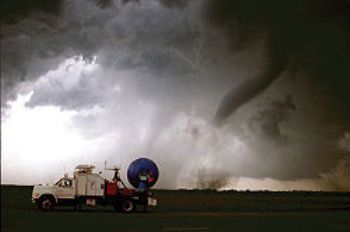Researchers from the University of Colorado Boulder will be showcasing the Tempest unmanned aircraft at the Capitol Hill event which is scheduled on September 7, 2011 in Washington.
 Tempest Unmanned Aircraft
Tempest Unmanned Aircraft
The research team from CU-Boulder research and Engineering Center for Unmanned Vehicles along with the team from University of Nebraska-Lincoln achieved interception of a ‘supercell’ thunderstorm using Tempest in May 2010. The Tempest collects vital meteorological data pertaining to thunderstorms which cause tornadoes. Their efforts are part of the second phase of Verification of the Origins of Rotation in Tornadoes Experiment (VORTEX2)
VORTEX2 is so far the biggest project working on tornadoes; as many as 100 scientists supported by 40 vehicles are working on the project. Research scientist conduct a thorough study of severe storms and record data about their origin, duration and speed of wind to arrive at conclusions pertaining to potential damage they may cause to people and structures. This is a nomadic project, scientists seated in the Tempest will move from one place to the other studying storms. The project makes use of most advanced instruments for conducting their experiments on supercell interception. It consists of an Armada armed with 10 mobile radars like the SMART-Radar from University of Oklahoma, Doppler on Wheels from Centre for Weather etc. Apart from these radars it houses 12 mobile mesonet instrumented vehicles from NSSL and CSWR, Tornado-Pods and 38 other deployable instruments. There are also photogrammetry teams from Lyndon State University, CSWR and NCAR involved in the project. The team leader of the research team will be presenting the Tempest unmanned aircraft at the event. The team will also be presenting the research data on earthquakes, tsunamis, hurricanes and oil spills at the event.